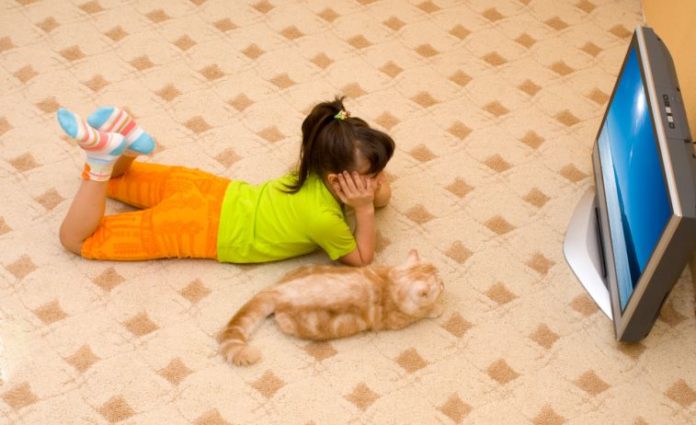A study of young children’s TV use by the Australian Institute of Family Studies and the University of New England has found that disadvantaged children are watching more television than children in families from higher socio-economic backgrounds.
Australian Institute of Family Studies researcher, Dr Ben Edwards said that children’s television watching is low in the first year of life but by age two to three years, television occupies a significant proportion of a child’s time.
“A third of children aged over two years old spend more than the American Academy of Paediatrics’ recommended limit of two hours per day watching television, especially on weekends,” Dr Edwards said.
“At critical ages for child development when children are under three years old, the more disadvantaged the child’s background, the more likely it was that they would watch television for more than two hours of TV per day.
“By the time children were aged between four and five, the proportion of children from more disadvantaged backgrounds watching more than three hours TV per day was more than double that of children from advantaged backgrounds.
“Children in families from higher socio-economic backgrounds tend to spend less time watching TV and more time using print media, either being read to, or children reading by themselves.
“As reading is important for school achievement this may be one of the means through which social advantage is transmitted across generations.”
The study drew on parents’ time use diaries from the Longitudinal Study of Australian Children. Institute researcher and co-author of the report, Mark Sipthorp said practically all parents, regardless of their socio-economic position, claimed to have rules about television watching governing suitable program material, when it could be watched and for how long.
“While parents say they have family rules about viewing habits, the data suggest that many of these rules were applied inconsistently. In some household the television was often running when no one was watching, or meals were consumed while it was on,” Mark Sipthorp said.
“Similarly the child may have turned on the television or changed channels using the remote, at least in some instances, without parental supervision.
“Less consistent supervision was evident among the more disadvantaged families. However this was offset by the fact that families from the lowest socio-economic backgrounds watched television more frequently with their children. This has been shown to reduce children’s trauma and fright, and improve cognition, vocabulary and media literacy,” he said.
The research also found that the higher a family’s socio-economic position, the higher the chances that their child would be read a story and the more likely it was that when stories were read, the activity would last for longer. Among the most disadvantaged families 41-47 per cent of children were not read to at all, compared to only 15-22 percent of children in the most advantaged families.











